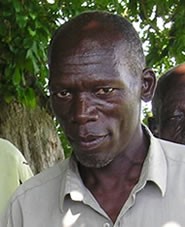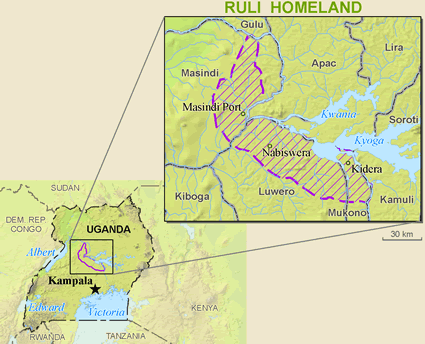The Baruuli-Banyara are a people of Central Uganda who generally live near the Nile River-Lake Kyoga basin. The people first settled in the northern part of Uganda, but later migrated to the western parts of Uganda to the Bunyoro kingdom as the king's guards. Though the names of the two groups (Baruuli and Banyara) appear somewhat different, they see themselves as the same people and attribute the difference in names to the body of water (the Sezibwa River) that separates them.
The Baruuli-Banyara culture has acquired cultural aspects of the surrounding Baganda and Banyoro. But despite being assimilated into these dominating cultures, the Baruuli-Banyara still continue to maintain their language and cultural identity. Some distinguishing characteristics of Baruuli-Banyara culture are their cultural leader - the Isaabaruuli - and their methods of naming around totems and giving names after circumstances. They have 120 clans but, unlike many other cultures, power is not hereditary.
The Baruuli are cattle keepers, goat-herders, fishermen and cultivators. Most live in mud houses with iron or thatched grass roofs. Transportation is difficult and people either walk or use bicycles for traveling, often for very long distances. The Baruuli-Banyara use Bibles of the neighboring languages. However understanding of these Scriptures is severely limited due not only to low literacy rates but also because some of the Baruuli-Banyara people are monolingual speakers of Ruruuli-Runyara. Nationals need training in various disciplines. Community development projects and more in-depth Bible training would be useful also. The Roman Catholic and the Church of Uganda (or Anglican Church) are the two largest denominations among the Baruuli-Banyara. A very small percentage of the people are Muslim. Many still follow the traditional religions, and there is a high level of syncretism among those who go to church.
Scripture Prayers for the Baruli in Uganda.
| Profile Source: Anonymous |











